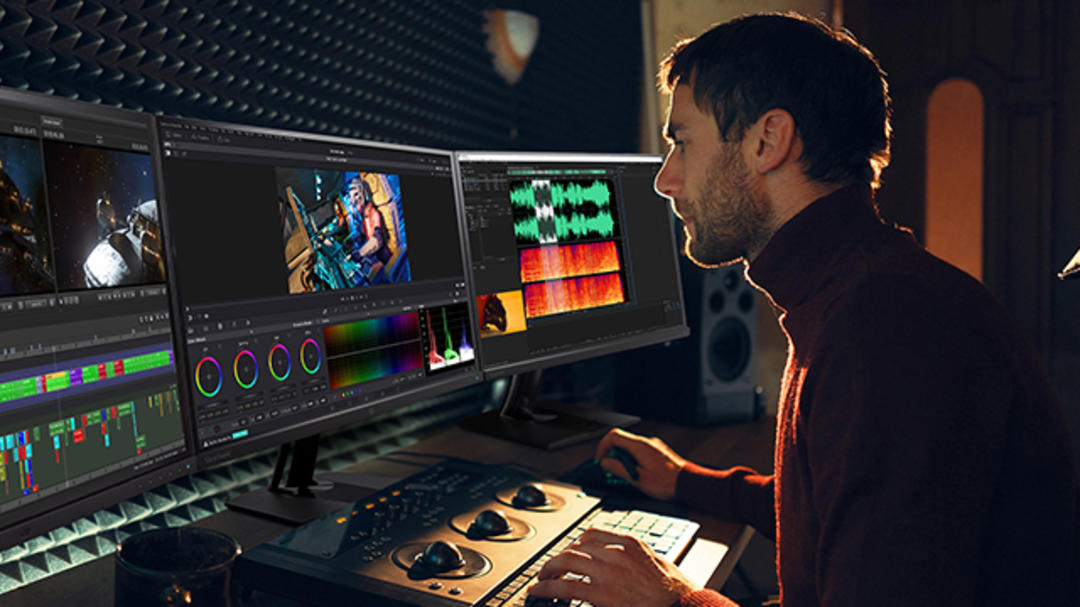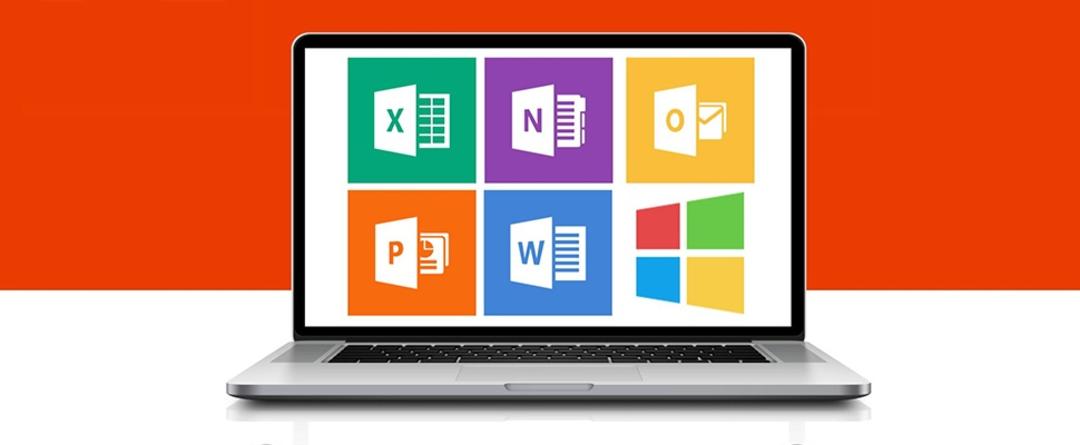How many screens are you currently using? Especially in recent years, the use of two or more screens has increased in popularity. Windows has the necessary options to enjoy such a multi-monitor setup even more. This is how you set up multiple displays.
We start with the basics: adjusting the different screens so you can make the most of all screens. You use the Windows settings window for this (via the key combination) Windows key+I† To choose System / Display† Tell Windows how the screens are physically positioned relative to each other for optimal operation. If you fine-tune this position, windows can span, for example, two screens and the mouse pointer will move seamlessly from one screen to the next.
Select a screen and drag it to the correct position relative to the other screen. Are the screens aligned correctly? click To apply† To find out which screen you have set, click on it. To identify† Unique number clearly indicates which screen you are dealing with. By To detect Let your Windows search for available displays again. This feature only works properly when the screens are turned on.

alignment scale
Do you use screens of different resolutions? In practice this need not be a problem, but sometimes the solutions are very different. For example, display elements on one screen may be larger than the other. Adjust the scale to better align the views.
in the section Scale and Layout (Windows 10) and scale and layout (Windows 11) select the scale you want. Resize text, apps and other items† Change the scale first on the screen with the highest screen resolution. if scale one hundred% choose a higher scale, for example 150%†

Extras for Windows 11
Are you using Windows 11? It has a number of clever innovations that make the use of the two screens even more interesting. In the settings window, System / Display† Then translate the chapter Multiple screens from. First option – Remember window positions based on connection to a monitor – ensures that your windows are never lost again.
Are you using a second monitor and have multiple windows open on it? As soon as you disconnect the screen (for example, because you took your laptop with you), Windows remembers which windows are showing on the screen. If you reconnect the display later, these windows will be restored immediately.
You will also find the option Minimize windows when disconnected from screen† This option allows windows on the external display to be minimized to the on-screen taskbar, which stays at lightning speed as soon as the display is unplugged. This will prevent windows from disappearing.

modes
When using multiple displays, you can choose between different display modes. You can find the options here: Multiple screenswith the † option Duplicate these screens The content is the same on all screens. To increase the working area appropriately Expand these screens† This allows you to span windows across different screens.
To temporarily use a screen, you can choose: Show only in 1 or Show only in 2† Windows always uses a home screen. The home screen is the primary screen containing the start menu. You can define the screen you want for this. Pick and choose the screen Set this screen as home screen†
It is also always possible to switch between different modes later. we are using Center of motion† Click this button and select project† Then choose between computer screen only† copy† to expand and Second screen only† Prefer to use the keyboard? Print Windows key+P and repeat until the desired mode is selected.
find windows
You can recognize it: you are working on several screens and you decide to disconnect one of the screens. Then you try to reopen a minimized window via the Windows taskbar, but the window goes out of view (to the previously reserved window). How do you get this window back?
Print shift and hold this key while right-clicking the taskbar button of the missing program. To choose Movement† Then drag the mouse until the window reappears.

set direction
Did you know that you can also adjust the orientation of the screens? For example, you can use one screen horizontally (landscape) and the other vertically (portrait). The second mode turns out to be particularly useful in practice when working with long pages (eg websites) or large chunks of text: you have to scroll less, after all. Such a vertical position can also be beneficial for programmers (who work with many lines of code).
go to section Scale and Layout (Windows 10) or scale and layout (Windows 11) and select display mode in front of view† Additionally, you have the option to mirror information on the screen: Landscape (mirrored) or for … Portrait (mirrored)†
Unit
If you’re using multiple screen brands or different screen types, unfortunately it’s not obvious that every screen looks the same. Things like white balance, color temperature can differ between screens and you can see this right away if you place the screens side by side. You can get outside help to make the screens more unified.
You can find the free ScreenBright program at https://kwikr.nl/screenbright. Once opened, you choose white background† Then adjust the color temperature and white balance using the vertical and horizontal sliders. You perform these steps on each screen so that the view becomes a single whole. A side note: ScreenBright is not supported by all displays. In this case, you will receive a notification.

Show taskbar
Determine on which screen the Windows taskbar will be displayed. Right click on the taskbar and select Properties (Windows 10) or Taskbar Settings (Windows 11). By default, the taskbar is shown on all screens. Bee Show taskbar on all monitors open slider Outside† Move the taskbar to the desired screen: first make sure the taskbar is unlocked: right click on it and Lock the taskbar It is closed. Drag the taskbar to the screen you want.
In Windows 11, uncheck Show my taskbar on all monitors in the section Taskbar Behavior† In Windows 11, you can also specify in which taskbar open applications should be shown. Choose your desired location from the options Show my taskbar apps when using multiple monitors† For example, do you want apps to appear on all taskbars regardless of the screen they are active on? then choose All toolbars†
Customize the taskbar
Seize the opportunity to optimize the appearance of the taskbar now. Right click on it and select Properties (Windows 10) or Taskbar Settings (Windows 11). To make the bar more compact Using small taskbar buttons† You also specify whether similar windows can be grouped (Combine toolbar buttons†
You can also go to the option Show toolbar buttons on specify in which taskbar the buttons will be displayed. This option is important if you show a taskbar button on every screen, so there is a main taskbar and a sub-taskbar. Finally, you determine how the buttons on other toolbars are displayed. To choose Always† hide tags† When the taskbar is full or Never†

Background
You can give each screen the same background, but you can also choose an extra wide background. You can then spread it across different screens to form a single whole. A good website for this is www.dualmonitorbackgrounds.com. The makers have collected a lot of backgrounds that you can place on two or more screens. Click on a background for details. This way you can see, among other things, what resolution the background has.
Usually you can get the backgrounds in different sections. Set the background. Are you using Windows 10? Open the windows settings window (Windows key+I) and Select Personal Settings / Wallpaper† in the menu Background I choose you picture† click pass a leaf and select the background you want. with the option Choose the view you want then choose on multiple screens†
Are you using Windows 11? In the settings window, Personal settings† Bee Customize the background to your personal preference I choose you picture† click Browse photos (in the section choose a photo) and hover over the image. Finally you choose on multiple screens in option Adjust the picture to fit your desktop†
DisplayFusion
You can apply more control when using multiple displays with the external program DisplayFusion pass. The cost of the program is about 30 euros, but you can try it for a month and then continue using a limited version.
It is a useful option Monitor Blur: screens you are not using are temporarily dimmed. This provides a quiet working environment. Select in DisplayFusion Turn on monitor blurwith the † option Watch Blur Mode would you choose Blur out idle monitors† After that, you select the color used during dimming (via Monitor fading color†
The option is also interesting triggers† These are predetermined actions that must take place. For example, you can specify here that a newly opened window on the first screen is always automatically moved to the second screen. You can create triggers yourself. click To add and specify the action (in our example: Move screen to selected monitor†
Next, take a look at the section mouse managementwith the † option Prevent mouse cursor from getting stuck on misaligned monitor edges, make sure the mouse always moves smoothly from one screen to the next. Also handy: the option to always move the mouse, whether you’ve reached the extreme screen or not. To choose Move mouse cursor to other monitor from the left/right side of the screen (or via option Move mouse cursor from top/bottom of screen to other monitor†

Source: Computer Totaal













